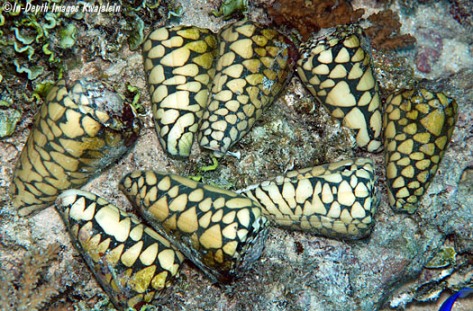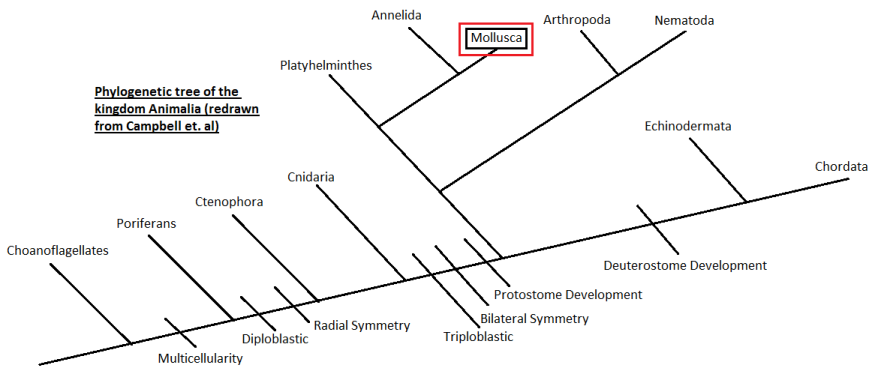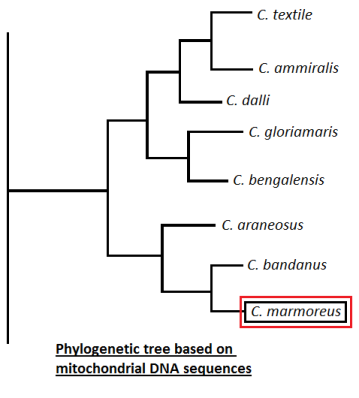Classification
 Domain: Eukarya
Domain: Eukarya
Kingdom: Animalia
Phylum:
Mollusca
Class: Gastropoda
Order: Neogastropoda
Family: Conidae
Genus: Conus
Species: Conus marmoreus
Domain: Eukarya
Eukaryotes have cells with a
nucleus and membrane bound organelles and have multiple linear
DNA vs. singular circular DNA.
Kingdom: Animalia
Almost every animal is
heterotrophic, meaning it consumes its food rather than making
it via photosynthesis. All are multicellular, don’t have
cell walls, and can go through sexual and/or asexual reproduction.
Phylum: Mollusca
Mollusks are triploblastic,
which means they have 3 types of tissue, and possess a coelom
(fluid-filled body cavity). Their bodies are divided into a
head-foot, visceral mass, & mantle. Some members have an
exoskeleton made mostly of calcium carbonate, instead of chitin
like in arthropods such as the
Common Green Darner Dragonfly. They can be
dioecious (two houses; only one sex
per organism) or monoecious (hermaphroditic), or they can be asexual. Most have an
open circulatory system with a heart, vessels, and open and
empty tissues, and typically have a radula, which is a
tongue-like organ with up to 250,000 teeth that acts like a
conveyor belt.

Class: Gastropoda
Gastropods (such as
Appalachina
chilhoweensis) are extremely diverse and can be found
in many types of habitats, such as marine, freshwater, or
terrestrial. Some have gills, and some have simple lungs.
Shell coiling is either planispiral or conispiral. All
have undergone torsion, or which is a complete 180 degree twist
in body components relative to the head-foot.
Order: Neogastropoda
Most in this order are distinguished by their operculum (shell
lid) and well-developed
siphon for finding prey, often supported by a special groove in
the shell. They are mostly predators or deposit-feeders.
Family: Conidae
All are carnivorous and feed on
worms, other gastropods, and in some cases even small fish by ejecting their
poison-filled modified radula out of their
proboscis. They are generally cone-shaped with a long slit
opening along the side and a flat top, although some have
spires. They have varied colors and patterns on shell.
Genus: Conus
There are around 500
species in this genus, which are also known as cone snails.
Members produce around 100 venom peptides, with little overlap
between species. Most live in shallow waters (>100m) and have
separate sexes. While many fish eat mollusks, cone snails are
the only snails known to eat fish.
Species: Conus marmoreus
The shell of this species is
usually 2 to 3 inches long and patterned with rather amorphous
shapes of various color (almost always whitish shapes on a dark
background). They are molluscivorous, which means they
hunt and
eat other mollusks. Their radular tooth is relatively short
compared to other cones.
Continue to Habitat
Return to Home
Visit MultipleOrganisms.net
Visit the UW-La
Crosse Website
Contact Information